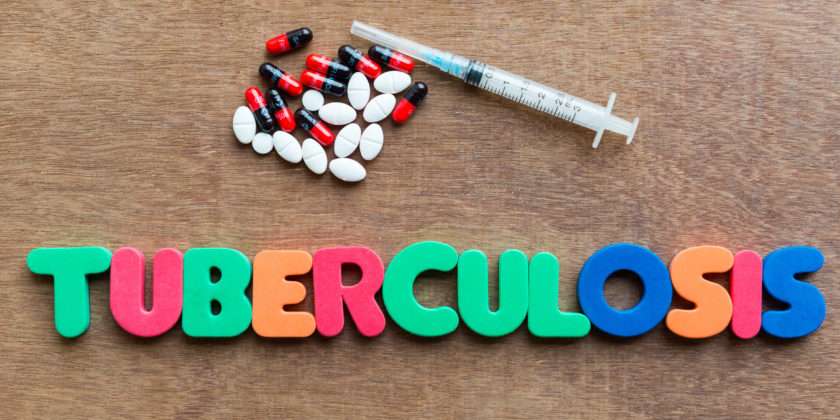People with latent Tuberculosis (TB) infection do not have symptoms, and they cannot spread TB bacteria to others. However, if TB bacteria become active in the body and multiply, the person will go from having latent TB infection to being sick with TB disease. For this reason, people with latent TB infection are often prescribed treatment to prevent them from developing TB disease. Treatment of latent TB infection is essential for controlling and eliminating TB in the United States. Of course, a person with an active TB infection requires treatment. Jay Harold’s post, “Drug Treatments for Tuberculosis: 5 High Priority Groups,” talks about the disease that affects almost 2.5 billion people worldwide.
What is Tuberculosis?
Tuberculosis (TB) is a disease caused by bacteria called Mycobacterium tuberculosis. The bacteria usually attack the lungs, but they can also damage other parts of the body. TB spreads through the air when a person with TB of the lungs or throat coughs, sneezes, or talks. Jay Harold talked about the causes and symptoms of TB, in a previous post.
Treatment of latent TB infection should be initiated after the possibility of TB disease has been excluded.
Groups Who Should be Given High Priority for Latent TB Infection Treatment1
People with a positive IGRA2 result or a TST reaction of 5 or more millimeters. Interferon-Gamma Release Assays (IGRAs) are whole-blood tests that can aid in diagnosing Mycobacterium tuberculosis infection. They do not help differentiate latent tuberculosis infection (LTBI) from tuberculosis disease.
- HIV-infected persons
- Recent contacts of a TB case
- Persons with fibrotic changes on chest radiograph consistent with old TB
- Organ transplant recipients
- Persons who are immunosuppressed for other reasons (e.g., taking the equivalent of >15 mg/day of prednisone for 1 month or longer, taking TNF-α antagonists)

It is very important that people who have TB disease are treated, finish the medicine, and take the drugs exactly as prescribed. If they stop taking the drugs too soon, they can become sick again; if they do not take the drugs correctly, the TB bacteria that are still alive may become resistant to those drugs. TB that is resistant to drugs is harder and more expensive to treat.
TB disease can be treated by taking several drugs for 6 to 9 months. There are 10 drugs currently approved by the U.S. Food and Drug Administration (FDA) for treating TB. Of the approved drugs, the first-line anti-TB agents that form the core of treatment regimens are:
- isoniazid (INH)
- rifampin (RIF)
- ethambutol (EMB)
- pyrazinamide (PZA)
Regimens for treating TB disease have an intensive phase of 2 months, followed by a continuation phase of either 4 or 7 months (total of 6 to 9 months for treatment).
Treatment Regimens for Latent TB Infection3
(I know that the tables are busy!)
The four treatment regimens for latent TB infection (LTBI) use isoniazid (INH), rifapentine (RPT), or rifampin (RIF). Treatment must be modified if the patient is a contact of an individual with drug-resistant TB disease. Consultation with a TB expert is advised if the known source of TB infection has drug-resistant TB.
| Drugs | Duration | Interval | Comments |
|---|---|---|---|
| Isoniazid | 9 months | Daily | Preferred treatment for:
|
| Twice weekly* | Preferred treatment for:
|
||
| Isoniazid | 6 months | Daily | |
| Twice weekly* | |||
| Isoniazid and Rifapentine | 3 months | Once weekly* | Treatment for Persons 12 years or older Not recommended for persons who are:
|
| Rifampin | 4 months | Daily |
*Use Directly Observed Therapy (DOT)
Note: Due to the reports of severe liver injury and deaths, CDC recommends that the combination of rifampin (RIF) and pyrazinamide (PZA) should not be offered for the treatment of latent TB infection.

Causes of Drug-resistant TB4
Drug-resistant TB can occur when the drugs used to treat TB are misused or mismanaged. Examples of misuse or mismanagement include
- People do not complete a full course of TB treatment
- Health care providers prescribe the wrong treatment (the wrong dose or length of time)
- Drugs for proper treatment are not available
- Drugs are of poor quality
Drug-resistant TB is more common in people who
- Do not take their TB drugs regularly
- Do not take all of their TB drugs
- Develop TB disease again, after being treated for TB disease in the past
- Come from areas of the world where drug-resistant TB is common
- Have spent time with someone known to have drug-resistant TB disease
Drug-Susceptible TB Disease Treatment Regimens5
Regimens for treating TB disease have an intensive phase of 2 months, followed by a continuation phase of either 4 or 7 months (total of 6 to 9 months for treatment).
| INTENSIVE PHASE | CONTINUATION PHASE | ||||||
|---|---|---|---|---|---|---|---|
| Regimen | Drugs | Interval and Doseb (minimum duration) |
Drugs | Interval and Doseb,c (minimum duration) |
Range of Total Doses | Commentsc, d | Regimen Effectiveness |
| 1 | INH RIF PZA EMB |
7 days/week for 56 doses (8 weeks) or 5 days/week for 40 doses (8 weeks) |
INH RIF |
7 days/week for 126 doses (18 weeks) or 5 days/week for 90 doses (18 weeks) |
182 to 130 | This is the preferred regimen for patients with newly diagnosed pulmonary TB. | #1 is best and #4 is least effective. |
| 2 | INH RIF PZA EMB |
7 days/week for 56 doses (8 weeks) or 5 days/week for 40 doses (8 weeks) |
INH RIF |
3 times weekly for 54 doses (18 weeks) | 110 to 94 | Preferred alternative regimen in situations in which more frequent DOT during continuation phase is difficult to achieve. | |
| 3 | INH RIF PZA EMB |
3 times weekly for 24 doses (8 weeks) | INH RIF |
3 times weekly for 54 doses (18 weeks) | 78 | Use regimen with caution in patients with HIV and/or cavitary disease. Missed doses can lead to treatment failure, relapse, and acquired drug resistance. | |
| 4 | INH RIF PZA EMB |
7 days/week for 14 doses then twice weekly for 12 dosese | INH RIF |
Twice weekly for 36 doses (18 weeks) | 62 | Do not use twice-weekly regimens in HIV-infected patients or patients with smear positive and/or cavitary disease. If doses are missed, then therapy is equivalent to once weekly, which is inferior. | |
Tuberculosis is a serious health threat, especially for people living with HIV. People living with HIV are more likely than others to become sick with TB. Worldwide, TB is one of the leading causes of death among people living with HIV.
Enjoyed this post? Share it and read more here. Jay Harold has put together a Resource page that you may find useful when trying to improve your health and wealth. Please take this advice from Muhammad Ali and give back to others. “Service to others is the rent you pay for your room here on earth.”




